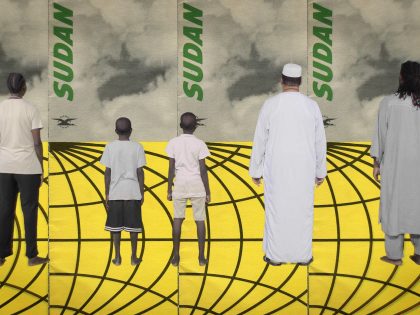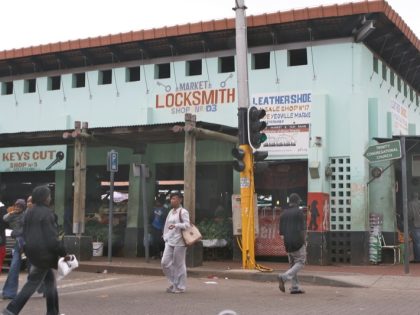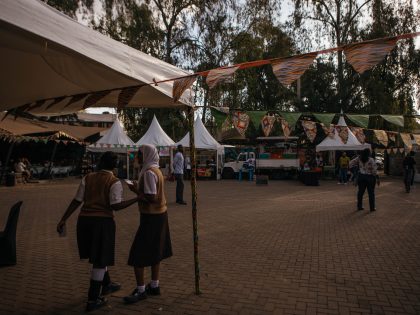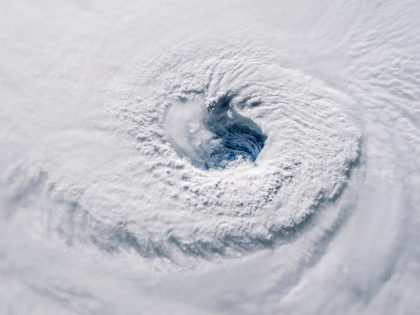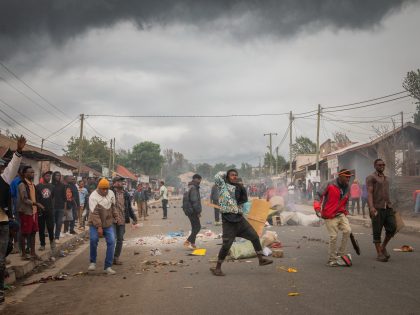On African Asylum Seekers in Israel
Media about African refugees and asylum seekers in Israel highlight their experiences and desires for rights, but erase their agency, portraying them solely as victims of violence and exploitation.
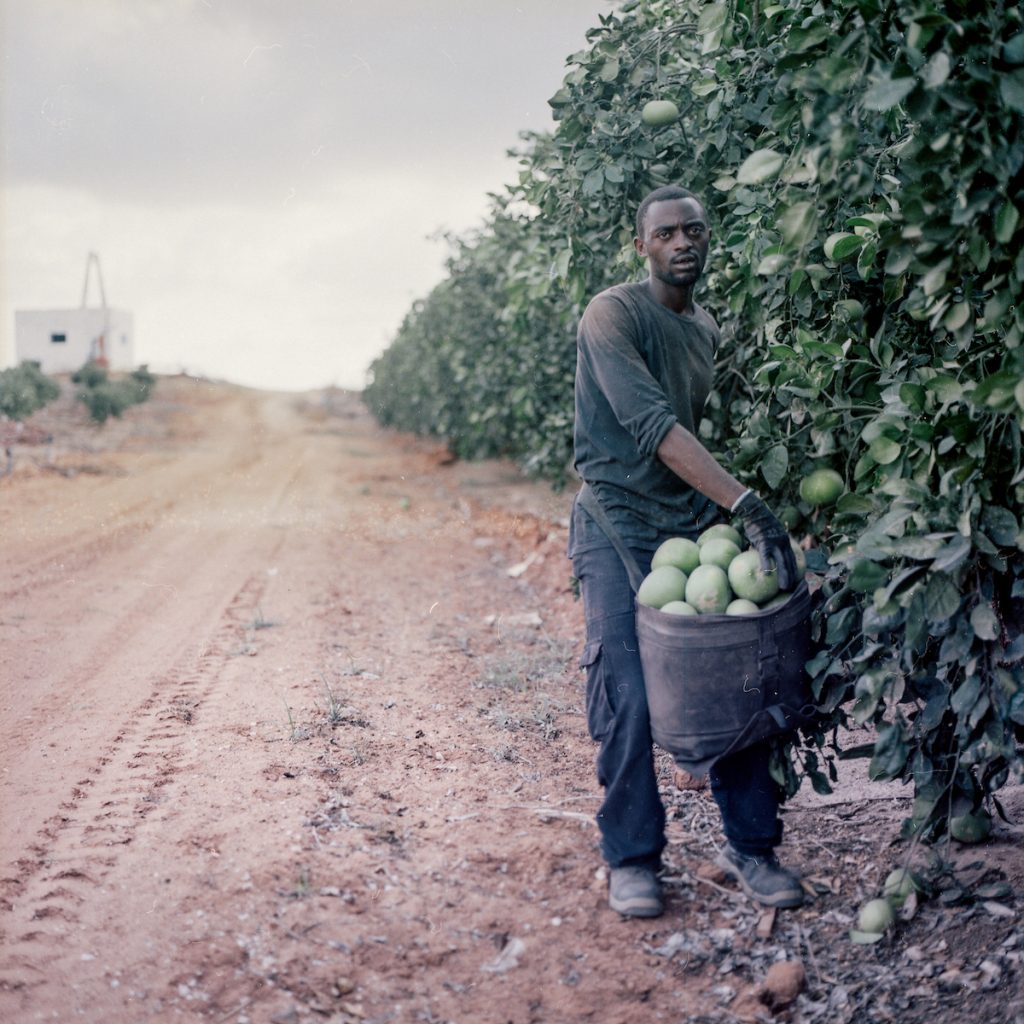
A Sudanese migrant worker in Israel (Photo: Amira_A via Flickr CC).
If you follow current headlines, you may have noticed a seemingly new conflict arising in the Middle East. Recent migratory trends in Israel have led to new challenges beyond the decades-long occupation of the Palestinian Territories. The tension surrounding the influx of African asylum seekers and refugees to Israel has reached a boiling point resulting in racist violence against these groups over the last several months.
In late April and early May, a series of Molotov cocktail attacks targeting asylum seekers and refugee communities, including a primary school for refugee children, marked a definite shift from xenophobic rhetoric to indiscriminate street violence. In late May, a 1000-person mob of right-wing Jewish Israelis vandalized African-owned shops and attacked asylum-seekers in the streets of south Tel Aviv. In the most recent attack, the home of Eritrean asylum seekers was firebombed in Jerusalem, as violence spread beyond cities with high concentrations of migrants. A warning scrawled outside the house made the message clear — Africans should leave the neighborhood or suffer the consequences.
The recent attacks have instilled an increased sense of foreboding in refugee communities. Volunteers from refugee ally organizations accompany children to school to discourage attacks, similar to the situation experienced by many Palestinians in settlement-plagued areas of the West Bank. Asylum seekers fear leaving their homes and many have lost what low-paying jobs they had due to governmental policies targeting refugees and their employers. Refugee aid organizations have been subject to threats of violence and even arrest for aiding “illegal migrants”. Yet this fear is not new, nor is the violence experienced by these communities.
Africans who have sought asylum in Israel since the end of 2006, currently number between 21,000 and 60,000 people, with the majority coming from Eritrea and Sudan, traveling through the Sinai Peninsula. Though Israel is a signatory of the 1951 Convention on the Status of Refugees, and both the 1954 and 1967 Protocols, the Israeli government does not have a functioning asylum process and has not adopted associated asylum legislation. As such, the situation faced by refugees in Israel is tense, as the asylum process is arduous; work permits and social services are lacking and/or outright denied. To date, the Israeli government has recognized less than 200 asylum seekers as refugees, portraying most as economic migrants traveling to Israel for work. UNHRC recently reported that in 2011, only one of 4,603 asylum applications was approved, with an additional 6,000 cases pending review.
As the number of Africans in Israel increased, so did levels of hostility from local Israeli communities, particularly in south Tel Aviv. The recent attacks that received heightened media attention are merely a continuation, though more explosive, of anti-African sentiments that have pervaded the Israeli state since the arrival of Ethiopian Jews in the 1980s and early 1990s. Anti-African protests in Tel Aviv began in 2010 and the home of Sudanese refugees in the city of Ashdod was firebombed in early 2011. The media, both in Israel and abroad, has largely failed to report the presence of racial incitement and violence as a process constructed over time, preferring to portray recent events as an overnight phenomenon in reaction to uncontrollable migration flows.
The American media landscape has largely ignored the struggles of African asylum seekers in Israel, focusing more closely on high-level political events surrounding the Palestinian-Israeli conflict and tensions with Iran. In the period preceding the recent violence, there was only sporadic reporting of refugee-related issues, even as Israel began constructing the world’s largest asylum detention facility in 2011. This facility in the southern Negev is expected to open in late 2012 and will incarcerate upwards of 10,000 people, including children.
Of the limited reporting that has been done, most lacks a serious analysis of the political situation in Israel and displays a number of disturbing trends, namely the mimicry of government security claims, the prioritization of Israeli voices over those of refugees themselves, and a failure to address the role of political figures in driving racial incitement. A general lack of context and clarity has resulted in a number of misleading headlines and news reports. Following the recent xenophobic riots in Tel Aviv, CNN published a report titled “Hundreds protest in Israel illegal immigration battle,” in which the outlet refers to asylum seekers as “illegal African migrants.” Even more damaging, when highlighting the violence and arrests that ensued, the outlet does not illuminate who were the perpetrators of such violence, leaving it unclear to the reader that it was African asylum seekers that were under attack.
The New York Times displays similar trends, though paints a picture of re-establishing order in response to the chaos resulting from migration. Articles published by Isabel Kershner and Ethan Bronner include headlines such as, “Israeli Leader Pledges Hard Line on Migrants” and “Israel Acts to Curb Illegal Migration from Africa.” Bronner takes it a step further in parroting racist and discriminatory language such as the usage of the word “infiltrators” to describe Africans in Israel.
Israeli media demonstrates similar trends, though there has been a marked shift in the general media landscape. Since the onset of the recent attacks, a number of news outlets began interviewing asylum seekers in response to the violence. The inclusion of these individuals has been a rare occurrence over the years, as even more progressive news outlets such as Haaretz have largely given greater space to Israeli elected officials and their associated ‘law and order’ narratives.
The recent inclusion of asylum seekers is not itself without flaw. Though these interviews illuminate the experiences of asylum seekers in Israel and touch on their want of greater rights including recognition as refugees, the overall portrayal erases the agency of these individuals, rendering them solely as victims of violence and exploitation. Very few outlets have reported on protests petitioning for refugee rights or asylum seeker-led demonstrations outside the Eritrean embassy demanding political reform. As a result, it is difficult, if not impossible, to pinpoint a political solution that is sought by the individuals most seriously affected by recent events – African asylum seekers themselves.













